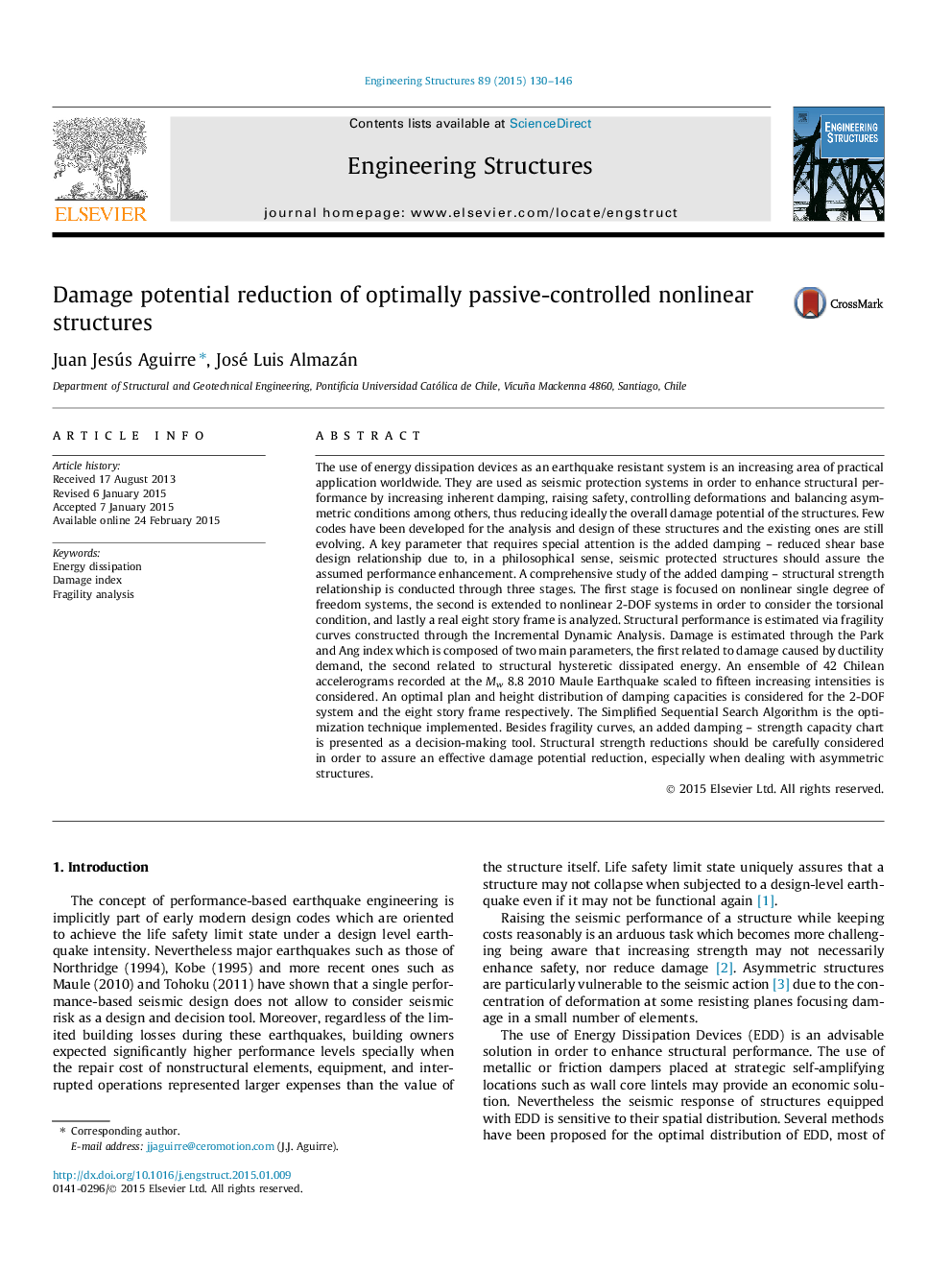| Article ID | Journal | Published Year | Pages | File Type |
|---|---|---|---|---|
| 6740425 | Engineering Structures | 2015 | 17 Pages |
Abstract
The use of energy dissipation devices as an earthquake resistant system is an increasing area of practical application worldwide. They are used as seismic protection systems in order to enhance structural performance by increasing inherent damping, raising safety, controlling deformations and balancing asymmetric conditions among others, thus reducing ideally the overall damage potential of the structures. Few codes have been developed for the analysis and design of these structures and the existing ones are still evolving. A key parameter that requires special attention is the added damping - reduced shear base design relationship due to, in a philosophical sense, seismic protected structures should assure the assumed performance enhancement. A comprehensive study of the added damping - structural strength relationship is conducted through three stages. The first stage is focused on nonlinear single degree of freedom systems, the second is extended to nonlinear 2-DOF systems in order to consider the torsional condition, and lastly a real eight story frame is analyzed. Structural performance is estimated via fragility curves constructed through the Incremental Dynamic Analysis. Damage is estimated through the Park and Ang index which is composed of two main parameters, the first related to damage caused by ductility demand, the second related to structural hysteretic dissipated energy. An ensemble of 42 Chilean accelerograms recorded at the Mw 8.8 2010 Maule Earthquake scaled to fifteen increasing intensities is considered. An optimal plan and height distribution of damping capacities is considered for the 2-DOF system and the eight story frame respectively. The Simplified Sequential Search Algorithm is the optimization technique implemented. Besides fragility curves, an added damping - strength capacity chart is presented as a decision-making tool. Structural strength reductions should be carefully considered in order to assure an effective damage potential reduction, especially when dealing with asymmetric structures.
Related Topics
Physical Sciences and Engineering
Earth and Planetary Sciences
Geotechnical Engineering and Engineering Geology
Authors
Juan Jesús Aguirre, José Luis Almazán,
